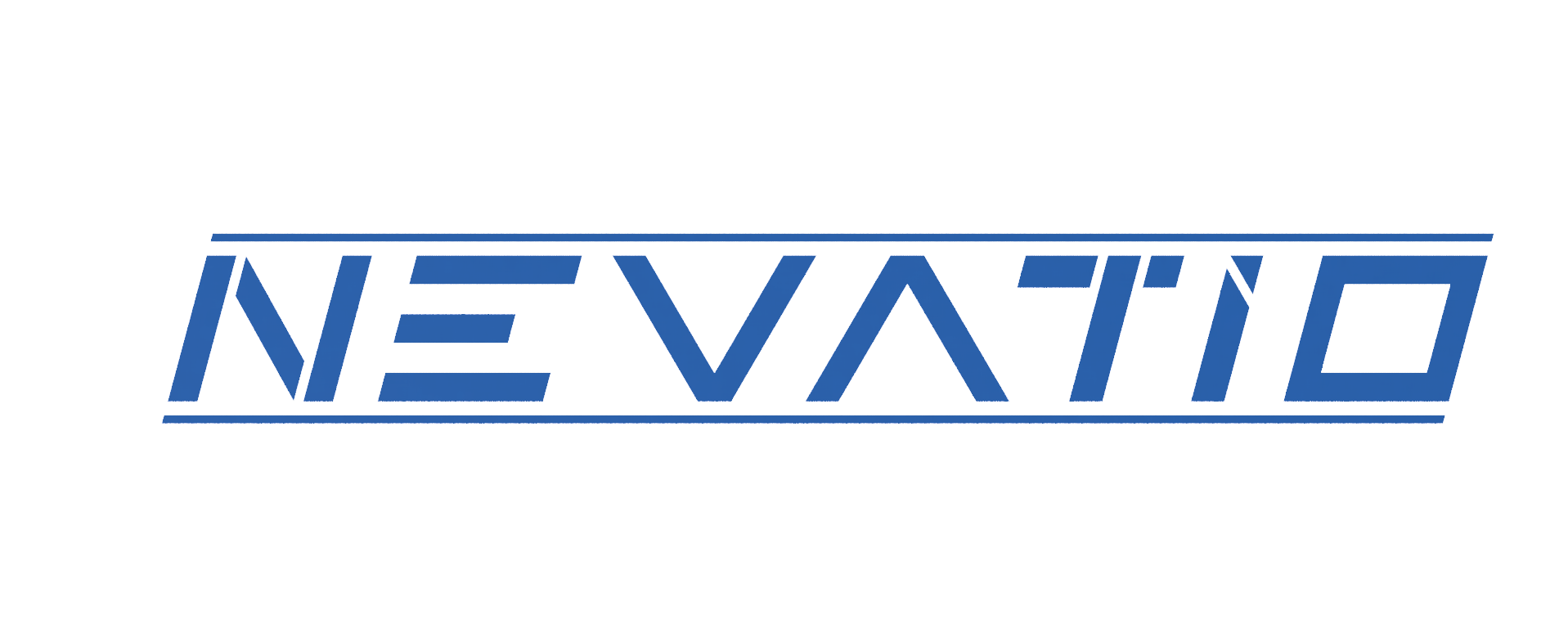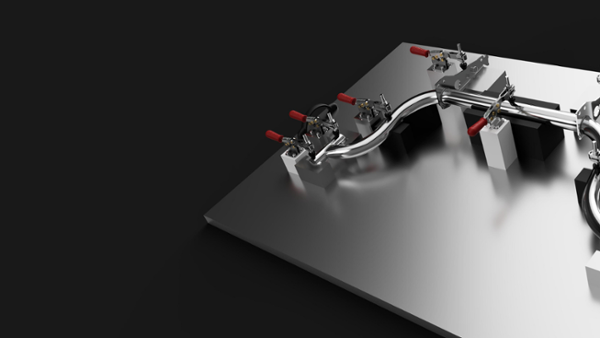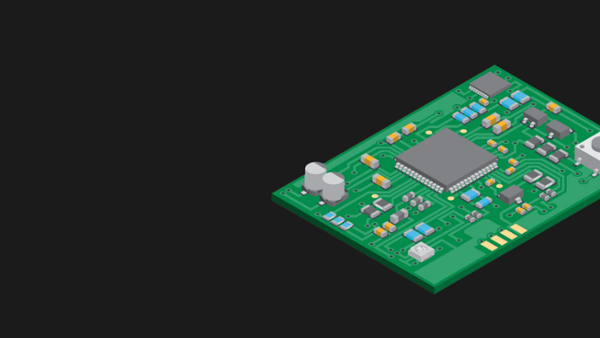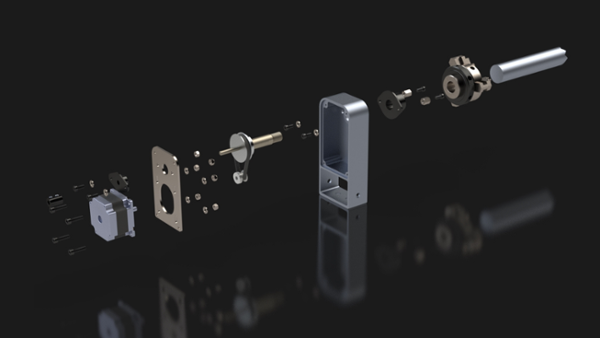Machine Design Engineering
Resources
Design and engineering of machines is a branch in which in addition to the knowledge of mathematics and science, the ability is required for creative imagination and artistic understanding.
Machine design engineering comprises designing, manufacturing, and testing or operating machines used in all branches of industry such as petroleum, chemical, textile, paper pulp, cement, coal mines, etc. A machine designer has to possess knowledge of basic sciences like physics and chemistry and familiarity with the technology of machine components such as motors, gears, pulleys, etc.
However, machine design is not merely applied science or engineering, but an art in which aesthetic sense plays a very important part. Considerable imagination is required for constructing a suitable mechanism for any given purpose. Hence, machine design is a blend of engineering and art.
Computers are now widely used in machine design work because they simplify the complex mathematical operation involved.
What is Machine Design Engineering?
Machine Design Engineering (also known as Machine Design, Mechanical Engineering Industry) is an engineering discipline that covers the application of principles of physics for manufacturing or otherwise creating objects, mechanisms, machines, and tools. It is the branch of engineering that combines mathematics, materials science, and engineering for the design, analysis, manufacturing or operation of machines and tools.
This discipline focuses on the combination of different machine elements such as mechanical components (such as gears, bearings etc.), electrical components (such as wires), hydraulic components (such as pipes) to accomplish a given task.
Machine Design Engineering is a vast field that includes many sub-disciplines such as manufacturing engineering, CNC programming, CAD/CAM, CMM etc.
Machine designing involves a high degree of mathematics and physics to produce desired precision and aesthetics in the machine or tool that is being designed. The built by the engineer should be fully functional and must satisfy the requirements of the end-user. The machine design engineer should be able to judge what degree of accuracy is expected from a particular machine or tool and then produce a design that will result in the desired level of performance.
What is a machine?
The word machine originated from Latin meaning, "a tool that serves the purpose of a human".
A mechanical device designed to perform a task uses energy and performs some action on its workpiece. The action may be the movement of a piston, an electric current through a light bulb, or the transfer of heat from one location to another by means of conduction or radiation. A machine consists of components such as structural members, fasteners, and electrical and electronic components. These parts are the "building blocks" of a machine, and they often have specialized names such as bearings, gaskets, and washers.
A machine is usually built by assembling many small pieces into a larger whole. For example, an automobile is assembled from thousands of pieces of metal, glass, and plastic that fit together to perform a specific task.
What are Machine Elements?
Machine elements are the discrete building blocks that are used to construct a machine. These components are either solid or fluid in nature and have distinct properties of flow, heat transfer etc.
The most basic machine element is the solid member, which has no capability of traveling through itself at any time. Solid members can be classified further into linear members and non-linear members. Linear members are subject to displacement under load, whereas non-linear members come into play only when they are subjected to an applied force or torque.
The fluid elements include the following: control piping, air ducts, hydraulic cylinders & hoses, gas storage cylinders, and pressure vessels, etc.
There are many more machine elements that are used in the construction of machines, these include gears, shafts, spindles, couplings, clutches and brakes, bearings, etc.
What is a Mechanism?
A mechanism is a collection of machine elements that work together to perform a task. It is a combination of solid and fluid elements that allows a machine to do more than what its individual elements can accomplish.
For example, a car is a mechanism that uses a motor to drive the wheels and gears that transfer the power from the engine to the drive axles.
The different types of mechanisms are:
1. Planar Mechanisms – it involves only planar motion of links around a single axis.
2. Spherical Mechanism – it is the one in which links revolve around a point, called as the center of rotation.
3. Cylindrical Mechanism – it involves rotational motion around a non-perpendicular line that passes through the center of rotation.
What are the types of machines?
There are three types of machines:
1. Mechanical Devices – these are simple devices that use energy to perform a task.
2. Machines – these are complex devices that use energy to perform a task and have the ability to transmit power from one part of the machine to another.
3. Systems – this is a combination of two or more machines that perform a task.
What are different types of Machine Design?
The process of designing is integral to machine design engineering. The initial step in designing is to create a sketch of the machine or assembly that one hopes to design. This enables the designer in understanding the need and concept of what it takes to solve a particular problem with a machine.
Designing begins with a clear definition of problems, development of ideas and concepts for solving these problems. Then it is followed by the development of a design and its analysis with the help of engineering science and mathematics. Most machine design engineers use computer-aided design (CAD) tools for their work.
There are three main types of machine design:
1. The process of designing the shape, dimensions, and tolerances of the components such as bearings, gears, screws, etc. so that they fit together to form a functional machine.
2. The study of how machines work and interact with their surroundings.
3. The process of designing the layout of a machine, selecting significant features such as drive shafts, sprockets, etc., and determining what operations will be required to make a product from its components.
What are Machine Design Engineers?
Professional machine designers must have a thorough knowledge of mechanical engineering, physics, and mathematics. They must be able to design new equipment or modify existing designs to meet the special needs of their customers. The final product may be a complete machine or just one component such as a coupling.
Machine designers are employed in manufacturing industries where they design the production equipment that is used to make goods such as automobiles, tractors, ships, and planes. They may also be employed in fields such as aerospace or petroleum.
The designed machine is often assembled at a manufacturing site and tested under operating conditions before it is delivered to its customer. Designers must therefore have a thorough knowledge of mechanics and materials
What are the types of machine design engineers?
Machine design engineers can be classified as per the functionality of the machines they design. These types of machine designers are broadly classified on the basis of their functionalities as:
a) Product Design Engineers
Product design engineers specialize in product development and new product development. They work with a team to conceive, plan and manufacture a product. Their job is to turn an idea into a marketable, manufactured, and profitable product.
These types of machine design engineers work with other engineers, marketing staff, and others in the company to design new products. Engineering skills are important for this type of machine designer because creativity alone cannot create a viable product. Business knowledge is also critical because product designers should understand the cost and marketing aspects of their designs.
While product designer engineers may sometimes create quantities of prototypes, they generally do not build them by hand or machine. Instead, other production specialists like machinists and CNC operators make rough models and finished products for testing and refinement.
These professionals can also help with design revisions and new model development. Product design engineers may have a bachelor's degree in industrial or mechanical engineering, electrical engineering, or computer science; many also have advanced degrees. In the industry, they usually work with other professionals to develop test products and refine them through trials, testing, and redesigns.
Though similar in responsibilities to other engineers, the role of a product design engineer is more creative and business-oriented. This type of machine design engineer is commonly found in industries like the Automotive industry, Aerospace Industry, Engineering consulting firms, and many more.
b) Industrial Design Engineer
Industrial design engineers work with manufacturers to make new products easier to use or more appealing to customers. They're also known as industrial designers, or simply ID's. Industrial design engineers use knowledge from many engineering fields, including mechanical and electrical engineering.
c) Mechanical Design Engineer
Mechanical design engineers create the structure, housing, and other parts for a product, such as a computer mouse or digital camera. Manual skill is key to this type of engineer's work, as is knowledge of the materials used to make the product. Mechanical design engineers might be asked to create a prototype before an industrial designer creates its form and finish. In some cases, they may also be responsible for quality control during production.
d) Process Design Engineer
Process design engineers specialize in designing factory equipment like electrical generators, oil refineries, and gas processing plants. They work with managers, mechanical engineers, electricians, and others. Process design engineers use principles of chemical engineering, electronics, and robotics to create systems that will manufacture products efficiently. These machines often require thousands of parts working together in harmony. Some process design engineers rely on computer-aided design (CAD) software to create their blueprints.
Engineers in this category are highly-skilled professionals working with cutting-edge technology, automation, controls, and machines. They put in long hours of work that requires an understanding of complex processes. Many process design engineers also consult with industrial designers since systems are often built into the physical structure of a product.
Most process design engineers have extensive education, often at the graduate level. They may have degrees in chemical engineering, mechanical engineering, operations research, or other fields related to process design.
One source of employment for process design engineers is consulting firms that specialize in designing systems for various industries. Large chemical companies are also a good bet since they own many plants used to manufacture products like pharmaceuticals.
In addition to solving problems related to designing the manufacturing process, process design engineers may also be responsible for:
- Improving factory equipment and conducting efficiency tests
- Creating 3D computer models of machines using software like Autodesk Inventor. Using CAD software is a popular way to create blueprints that can then be sent to factories or manufacturers for building approval
- Monitoring and testing factory equipment during production
- Identifying faults and issues with manufacturing processes and fixing them
What is a Machine Design Procedure?
Machine design procedures are the written instructions that machine designers use to create a machine. The steps in these procedures can vary, but they typically include:
- Studying the problem or task at hand
- Determining the function of the machine
- Sketching out ideas for a possible design
- Choosing the best design and creating a prototype
- Testing the prototype
- Modifying the design as needed
- Producing the machine
Machine design procedures typically take into account both the function of the machine and the constraints of its environment. For example, a machine that will be used in a factory might need to be able to withstand harsh conditions like extreme heat and noise.
The length of machine design procedures can vary depending on the machine being produced. For example, a machine for an office building may include only two or three steps while one for a space station might contain twenty-five steps.
Machine Design Engineering Drawings
There are several types of machine design engineering drawings used to describe a product in detail, including:
Assembly Drawings
Assembly drawings are used to show how the different parts of a machine fit together. They usually include a parts list and a bill of materials.
Detail Drawings
Detail drawings show the individual parts of a machine in great detail. They may include dimensions, tolerances, and other specifications.
Orthographic Drawings
Orthographic drawings are three-dimensional drawings that show a machine from several different angles. They are used to verify the accuracy of detail drawings.
Piping and Instrumentation Diagrams (P&IDs)
Piping and instrumentation diagrams show the layout of pipes, valves, and other components in a machine. They are often used to identify sources of leaks and other problems.
Structural Drawings
Structural drawings give information about the physical structure of a machine. They show the sizes and shapes of the parts that make up the machine, as well as the joints between them.
Wiring Diagrams
Wiring diagrams show how the electrical components of a machine are connected. They can help identify problems with the wiring or electrical system.
3D Models
3D models are computer-generated images that show a machine from all angles. They can be used to verify the accuracy of other drawings or to create marketing materials.






